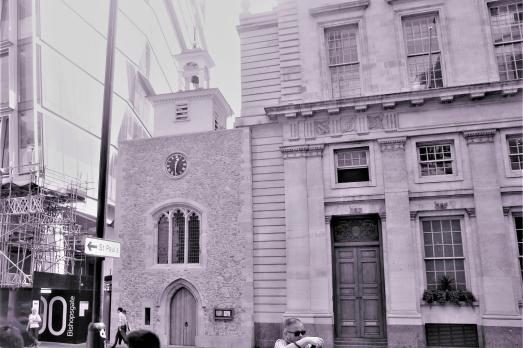The church was rebuilt around 1411 and some of this fabric, notably the south arcade, remains.
In the 17th century two shops were erected in front of the church, serving as an early example of ecclesiastical social enterprise. It was not until 1932 that these were removed when Bishopsgate was widened and the original facade of the church restored to view. A small bell tower was added in 1775. Miraculously, the original bell survived the 1993 bomb and has been rehung.
During the 19th century the furnishings of the church were changed at least twice, reflecting shifting styles of worship. The church was reordered once again in 1912 by Ninian Comper, but none of his furnishings now remain.
In the 1930s St Ethelburga’s achieved notoriety as one of the few churches in which divorced people could remarry, in defiance of the Bishop’s strictures.
The church suffered minor bomb damage during the Blitz of the Second World War and was repaired in 1953. On Saturday 24 April 1993, the South Armagh Brigade of the IRA detonated a bomb in a tipper truck loaded with almost a ton of fertiliser, parked right outside St Ethelburga’s. The damage caused by the bomb cost £350m to repair. The huge payouts by insurance companies contributed to a crisis in the industry, including the near collapse of the world’s leading insurance market, Lloyd’s of London.
70% St Ethelburga’s was destroyed. There was a proposal to demolish St Ethelburga’s in the aftermath but, following a sustained public outcry, it was rebuilt to its original plan, though much changed internally.
The building was formally reopened by Prince Charles and the new Centre for Reconciliation and Peace commenced its work in 2002.






